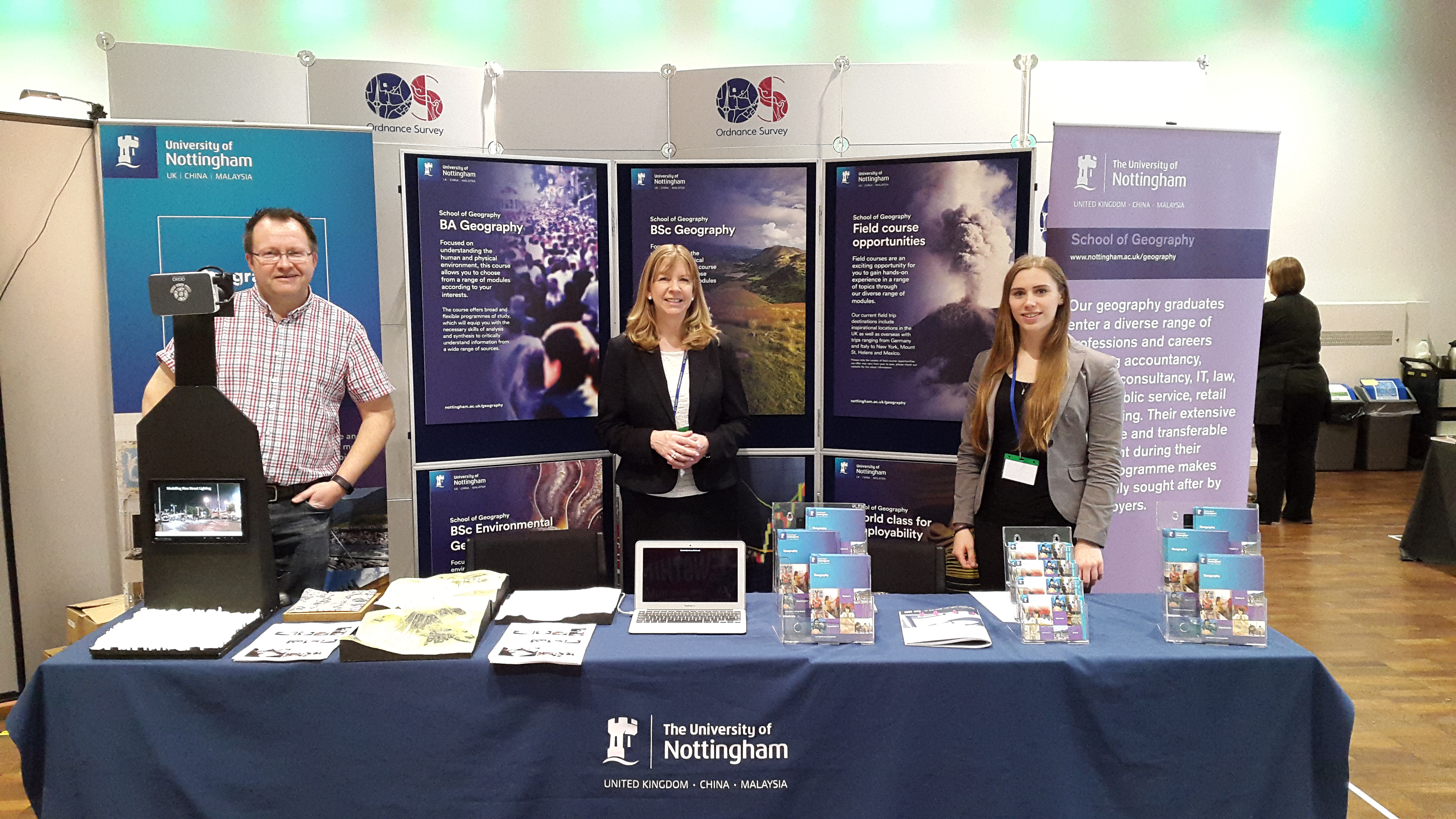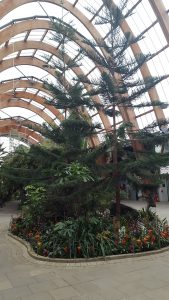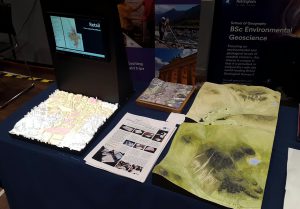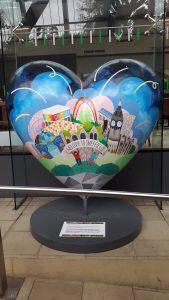
April 10, 2018, by lzzeb
GA Conference 2018
A blog by Lorna Burnell, PhD Student
The Geographical Association (GA) conference is held every year, hosting talks and exhibition stands with a variety of resources for schools from field study centres and exam boards to universities and professional organisations. Amongst the delegates are A-Level geography teachers, including many of our alumni and current A-Level students.
This year the School of Geography attended once again, with myself and Elaine Watts running our stand and presentations given by Dr Gary Priestnall and Professor Stephen Legg. Elaine and I helped teachers and prospective students learn about our school as well as assisting Gary in showcasing some of his work into the use of physical landscape models as a way to communicate geographical information to a range of audiences.
We headed up the M1 on Thursday 5th April to Sheffield Hallam University, this year’s host venue, in the new School of Geography car, packed full of banners, leaflets and Gary’s physical model display! We arrived and quickly set up ready to attend the evening’s public lecture and GA awards. The lecture by Daniel Raven-Ellison was an interesting look at Guerrilla Geography, and ways this can be used to challenge conventional thinking around place and social and environmental topics. A networking event then followed in the Winter Gardens where we got to meet fellow exhibitors, award winners and other interesting parties.
Friday, the first day of the conference, began with an early start. After a quick breakfast, Elaine and I headed over to the exhibition hall, where Gary was already setting up his display. This comprised of a number of physical models and a projection display, where a small projector displayed a range of social and urban data onto a 3D printed model of Nottingham city centre, linked up to a small screen which displayed more insight into the projected map. It demonstrated to teachers and educators how these 3D models (which Gary takes into schools all over the country and developed as a learning tool through working with Sue Richardson and Bev Smith at Keswick School) can be used to support spatial thinking, for example in understanding contour maps, and also for applications such as understanding flood risk and urban geographies. Some exciting new collaborations emerged as a result of this including a number of new school-based projects and the potential to develop some new resources working with David Morgan from the Field Studies Council.
Elaine and I had a busy day talking to a variety of people, including a number of ex-students who now teach geography and other teachers who send us their A-Level students. The GA talks we run in the school also got a lot of interest as a model of allowing school students to experience a lecture in a real university setting that is relevant to their curriculum. But hosting an exhibition stand for a whole day isn’t half tiring and we were glad to have a sit down by the end of it and enjoy dinner with some of Elaine’s colleagues from the British Cartographic Society.
On Saturday we were back on the stand early and enjoyed more interesting conversations with the conference delegates, before 3pm marked the end of the event and mass disassembling of the exhibition displays ensued. It was amazing to see some of these displays which were almost like a TV set in their own right, with walls and shelving created, display monitors built in and even including chairs and tables.
Ian Conway, the School’s Head Technician kindly picked us up, and we headed back to Nottingham, having had a very worthwhile time presenting research from the School and engaging with teachers and students in terms of recruitment. We will be back next year for sure!
No comments yet, fill out a comment to be the first




Leave a Reply